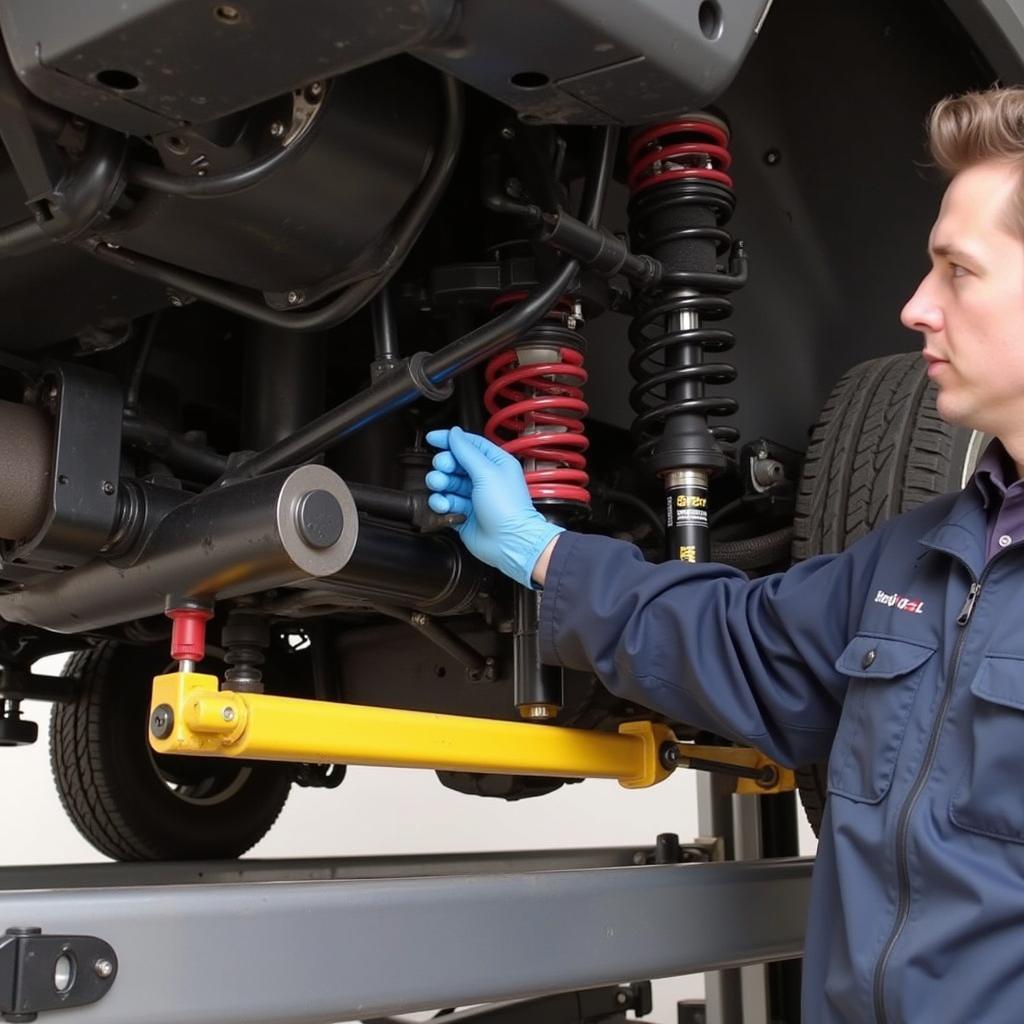The 2006 GMC Denali XL is a powerful and luxurious SUV, but like any vehicle, it can experience its share of issues. One common area of concern for owners is problems with the rear end. This article will delve into the common 2006 Denali XL problems with the rear end of the car, providing troubleshooting tips and solutions for DIYers and mechanics alike. From suspension woes to differential dilemmas, we’ll cover the bases to help you get your Denali XL back in top shape.
Understanding Common Rear-End Issues in a 2006 Denali XL
Several factors can contribute to rear-end problems in a 2006 Denali XL. These range from wear and tear due to age and mileage to more complex mechanical failures. Understanding these potential issues is the first step toward effective troubleshooting.
Suspension Problems
The suspension system is crucial for a smooth and comfortable ride. Common rear suspension problems in the Denali XL include worn shocks and struts, broken springs, and failing bushings. These can lead to a bumpy ride, excessive bouncing, and even instability. Is your Denali XL feeling a bit too bouncy? It might be time to inspect those rear shocks.
Differential Troubles
The differential is responsible for transferring power to the rear wheels, allowing them to rotate at different speeds during turns. Common differential problems include whining or humming noises, fluid leaks, and difficulty turning. Hearing strange noises from the back? A failing differential could be the culprit.
Axle Issues
The rear axle assembly connects the wheels to the differential and transmits power to the ground. Common axle problems include broken axle shafts, worn bearings, and damaged seals. Experiencing vibrations or clunking sounds? It’s time to take a closer look at the rear axle.
 2006 Denali XL Rear Suspension Inspection
2006 Denali XL Rear Suspension Inspection
Diagnosing 2006 Denali XL Problems With the Rear End of Car
Accurately diagnosing the problem is essential for effective repair. Here are some steps to help you pinpoint the source of your rear-end woes.
-
Listen for unusual noises: Pay attention to any whining, humming, clunking, or grinding sounds coming from the rear of the vehicle. These can often indicate specific problems, such as a failing differential or worn bearings.
-
Inspect for leaks: Check for fluid leaks around the differential, shocks, and axle seals. Leaks can lead to component failure and should be addressed promptly.
-
Check the suspension: Inspect the shocks, struts, springs, and bushings for signs of wear and tear. Look for cracks, leaks, or excessive movement.
-
Test the differential: Check for proper operation by driving the vehicle in tight circles. Listen for any unusual noises or binding.
-
Inspect the axle: Check the axle shafts for signs of damage or wear. Look for cracks, bends, or leaks.
Repairing Rear-End Issues
Once you’ve diagnosed the problem, you can begin the repair process. Some repairs, such as replacing shocks or struts, can be relatively simple DIY projects. Others, such as rebuilding a differential, may require the expertise of a qualified mechanic.
DIY Repairs
-
Replacing Shocks and Struts: This is a relatively straightforward task that can be done with basic hand tools.
-
Replacing Bushings: Replacing worn bushings can improve ride quality and handling.
Professional Repairs
-
Differential Rebuild: Rebuilding or replacing a differential is a complex job that requires specialized tools and knowledge.
-
Axle Repair: Repairing or replacing a damaged axle shaft is best left to a professional.
“Regular maintenance is key to preventing costly repairs,” advises John Miller, a seasoned automotive technician with over 20 years of experience. “Simple tasks like checking fluid levels and inspecting for leaks can go a long way in keeping your Denali XL running smoothly.”
Preventing Future Problems
Regular maintenance is crucial for preventing future rear-end issues. “Don’t neglect your routine maintenance,” reminds Sarah Johnson, a certified mechanic specializing in GM vehicles. “Regular fluid changes and inspections can catch small problems before they become major headaches.” This includes regular fluid changes, inspections, and addressing any minor issues promptly.
Conclusion
Dealing with 2006 Denali Xl Problems With The Rear End Of Car can be frustrating, but with proper diagnosis and repair, you can get your SUV back on the road in no time. Whether you’re a seasoned DIYer or prefer to leave it to the professionals, understanding the common issues and how to address them is essential for maintaining the performance and longevity of your Denali XL. For further assistance or expert advice, feel free to connect with us at AutoTipPro. You can reach us at +1 (641) 206-8880 or visit our office at 500 N St Mary’s St, San Antonio, TX 78205, United States.




Leave a Reply